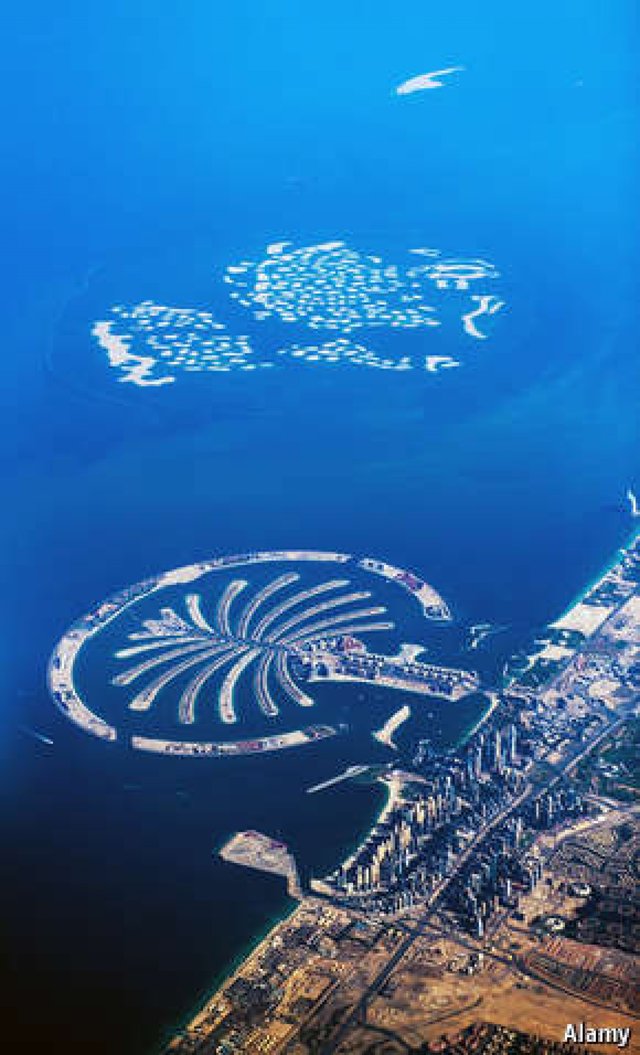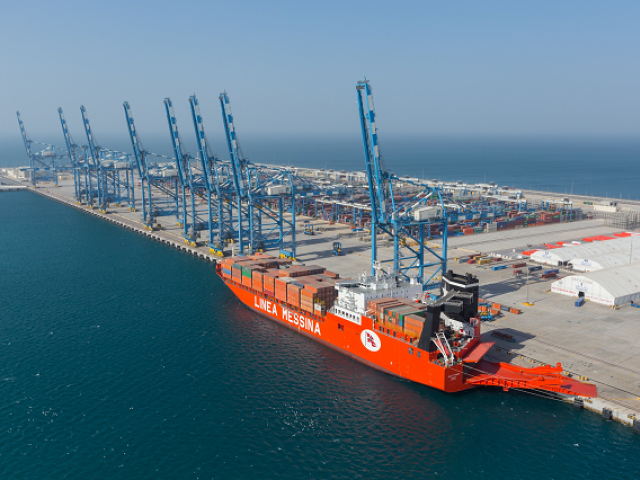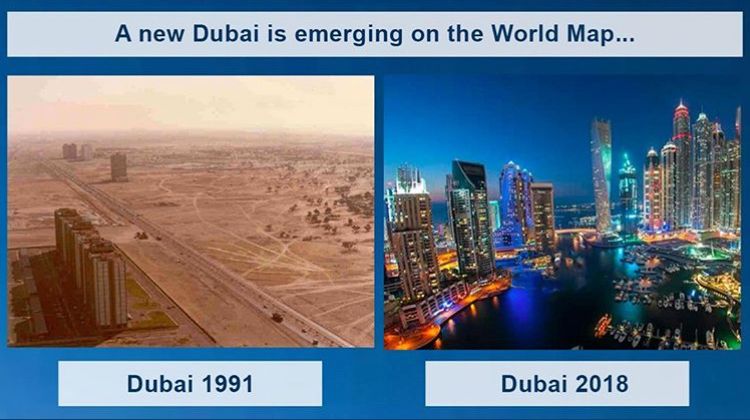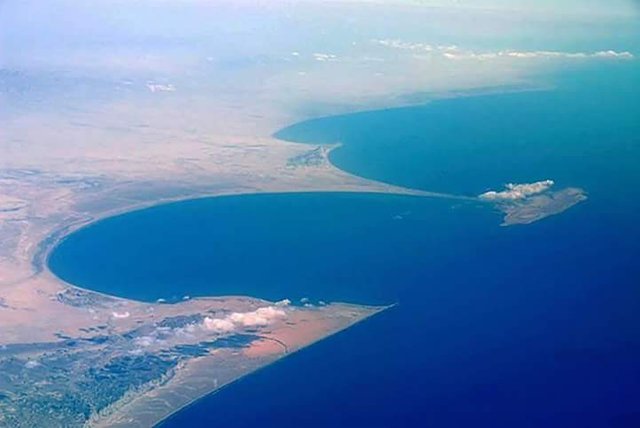Tail of two cities! Where is the next Dubai? I might have that answer.
TRAVELLERS flying into Dubai often look down and marvel at the man-made islands with the luxury villas. These outlandish creations came to symbolise the emirate’s economic boom in the mid-2000s—and the crisis that followed in 2009, when it needed help to pay its debts, many related to property development. But once on the ground, travellers see signs of a more sustainable prosperity. The airport is bustling—more international travellers use it than any other.
Dubai has bounced back from the crisis, which saw its economy contract by around 2.5% in 2009. It is expected to grow by around 5% this year, as it did last year. The question is whether it has found a more solid underpinning for its growth. There are reasons to worry. Property prices reached a new peak least year (see chart), raising concerns that the market was again overheating. But along with the airport, Dubai’s commercial areas and seaports are also buzzing. These are signs of growth, and also maturity, say analysts.

Dubai long ago used up most of its oil reserves, so the government has for years tried to diversify the economy. While skyscrapers and palaces grabbed headlines, this less glamorous work has slowly paid off: Dubai is now a regional hub in several areas. The airport, which already serves some 70m travellers a year, is set to expand to serve over 200m, eventually. Emirates, the local airline, is world-class. The port at Jebel Ali is by far the busiest in the Middle East, the cargo it handles growing by nearly 12% last year. It is likely to become the biggest container port in the world by 2030.
Three decades ago Jebel Ali became the Middle East’s first big “free zone” (a place where foreign firms can operate, unusually, without a local partner and with less red tape and lower taxes than in the rest of the emirate). Now it is the world’s largest, and Dubai has 22 such zones in total, most based around particular industries. Dubai’s free zone for finance even has its own judicial system, based on common law. The number of companies in it grew by 14% in 2013 and 18% last year, to reach 1,225. More growth is expected, with $1 billion worth of new development planned.
As the economy has rebounded, so too have property prices, which had plunged during the crisis. They surged in 2013 and 2014. But the government has taken steps to prevent another bubble, for instance by capping loan amounts and imposing new rules on flipping. These measures, along with an increase in the supply of housing and the low price of oil, have cooled the market. Prices are now falling and analysts think they could drop by 20% in some areas. Some are happy to see a potential bubble deflated.
The government-run companies that nearly sank the economy in 2009 have repaid or restructured most of their debts, often by extending maturities. “It is supportive of investor confidence that Dubai’s debt burden has become more manageable,” says Trevor Cullinan of S&P, a ratings agency. Most of Dubai’s investors are from the region. Surrounded by volatility, many see it is a haven for their cash. Some, like the rulers in Abu Dhabi, a fellow member of the United Arab Emirates (UAE) and Dubai’s saviour in 2009, also have a political stake in its success, and so have tolerated a remarkable lack of transparency. Dubai’s bonds, though popular, are not rated. It is not even clear how much public-sector debt it is carrying, or when it comes due.
NEXT DUBAI -> Gwader Port City

This beach town located in Indian Ocean, is being compares to Dubai.
This is being dubbed as the next Dubai. It is a very interesting place and in the next 20 years it promises to be next Dubai. It is today what Dubai in 1991.
Geographically Gwadar has the potential to become a mega metropolitan hub but Dubai is an exaggeration. There are many elements that questions the success of the ambitious project. Most prominently, Dubai is a city state and Gwadar is a indigenous port town that belongs to a vast country with deserts, mountains with wars and rebellions.
If we look at the advantages and disadvantages for Gwadar, this is what we have:
Advantages : More than 60% of the oil imports of world’s 1st and the 2nd most populous countries comes from the Persian Gulf.
With the rising middle class population in China the demand for energy is going to increase by 50% from 2010 to 2030. After the infrastructural project of CPEC is complete all raw materials and finished goods could flow in and out of China through Gwadar, which will solve the bottleneck China had with the “Malacca dilemma”.
Dubai :
A modern mega city powered by UAE oil money to serve as the commercial heart of the UAE
A commercial center with low regulations on trade, finance and business to attract top companies and firms to build regional headquarters and businesses in Dubai
A transport hub serving as the main nexus point for land, air and sea based trade and travel activity
Soft power hub through pro-tourism, entertainment and social policies
A safe, modern city to attract the best talent and human resources from world wide in order to advance the economic development and diversification of UAE
Top notch infrastructure to serve all the above needs (roads, rails, metros, airports, sea ports etc)
Gwadar:
Off load some of the capacity and bottleneck issues being faced by Karachi (Pakistan has only 1 port city to serve 200 million population and this is causing capacity issues)
Increase economic development in Baluchistan which has been neglected a lot
Serve as the starting point of the CPEC project which serves multiple purposes (diversification of Chinese oil import routes)
Act as a dedicated logistics base for Chinese economic activities in the Arabian sea (String of Pearls, Silk Road, African investment projects etc)
Possibly act as a military base for Chinese warships

